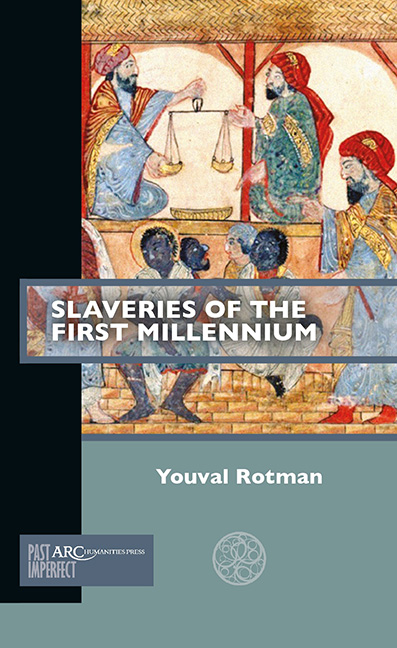Book contents
- Frontmatter
- Contents
- Introduction: Whence Slavery?
- Chapter 1 From Present to Past and Back
- Chapter 2 Slavery between Two Phenomena: Empire and Christianity
- Chapter 3 Enslavement, Captivity, and the Monotheistic Turn
- Chapter 4 New Polities, New Societies, New Economies
- Chapter 5 Migration, Integration, Connectivity
- Conclusion: Slavery as Historical Process— Towards a New Definition
- Further Reading
Chapter 3 - Enslavement, Captivity, and the Monotheistic Turn
Published online by Cambridge University Press: 13 January 2022
- Frontmatter
- Contents
- Introduction: Whence Slavery?
- Chapter 1 From Present to Past and Back
- Chapter 2 Slavery between Two Phenomena: Empire and Christianity
- Chapter 3 Enslavement, Captivity, and the Monotheistic Turn
- Chapter 4 New Polities, New Societies, New Economies
- Chapter 5 Migration, Integration, Connectivity
- Conclusion: Slavery as Historical Process— Towards a New Definition
- Further Reading
Summary
Ever since Roman slavery became a focus of research it has been treated under two axiomatic theses that became inseparable. The first was that slaves formed a social class of Roman society and played a major role in the economic life of the Empire. The second was that Roman slavery declined along with the declne of the Empire. The two theses together have determined the way we define and understand what Roman and medieval slaveries were. So, it is essential to analyze this idea of decline in the state of slavery in the passage from Late Antiquity into the Middle Ages.
Upon his death in 395 the emperor Theodosius (347–395) left both his sons as co-emperors of the Empire: Arcadius (395–408) reigned from Constantinople and Honorius (395– 423) from Rome. The Roman ruling authority, the imperium (i.e., Empire) was shared between the two but was divided geographically: the first ruled the Greek-speaking Eastern parts of the Empire, and the second the Latin West. The Empire's unity was kept, and any decision of either applied to the entire Empire. And yet, this political change was the beginning of a long process that transformed the unified Roman Empire into a medieval world of distinct civilizations. The Roman Empire continued to rule the northeastern regions of the Mediterranean. Today we term it “Byzantium,” the ancient Greek name of the Empire's new capital Constantinople (namely Istanbul, Europe's largest city today). The city's inhabitants named themselves “Byzantines,” a term we apply nowadays to the entire population of the Eastern Roman Empire whose language was Greek and whose religion was Orthodox Christianity (though they themselves still saw themselves as Rhōmaioi or Romans). Unlike the period of the first to fourth centuries, it no longer ruled the Mediterranean alone.
Meanwhile, in the West newcomers of Germanic and Asian origin appeared. They founded new political entities within the Western borders of the Empire: the kingdoms of the Vandals, the Visigoths, the Franks, and the Ostrogoths. In the sixth century Justinian (527–565) launched extensive and successful military campaigns to regain all these territories. His victories were short lived and were overshadowed by the conquest of the Byzantine East in the seventh century by the Sassanian Empire, a Persian Zoroastrian state that ruled over what is today Iran and Iraq between 224 and 651.
- Type
- Chapter
- Information
- Slaveries of the First Millennium , pp. 45 - 64Publisher: Amsterdam University PressPrint publication year: 2021



